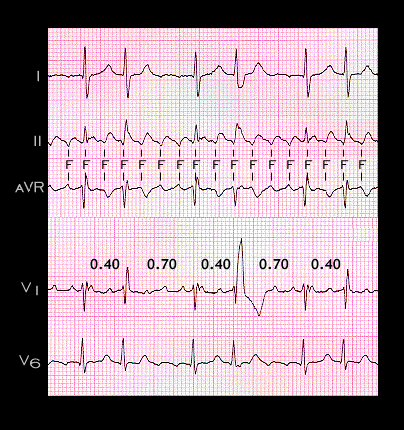
Shown here is an example of the Ashman phenomenon in a patient with atrial flutter and alternating 2:1 and 4:1 AV conduction. The flutter waves are marked with an “F”. The cause of the variable AV conduction will be discussed in chapter 8, entitled: “Bradycardias”. The first QRS complex of each pair is preceded by an RR interval of 0.70 and its duration is 0.08 seconds. The second QRS complex of each pair is preceded by an RR interval of 0.40 seconds. Its duration ranges from 0.10 to 0.12 seconds and its configuration varies between incomplete and complete right bundle branch block QRS.
